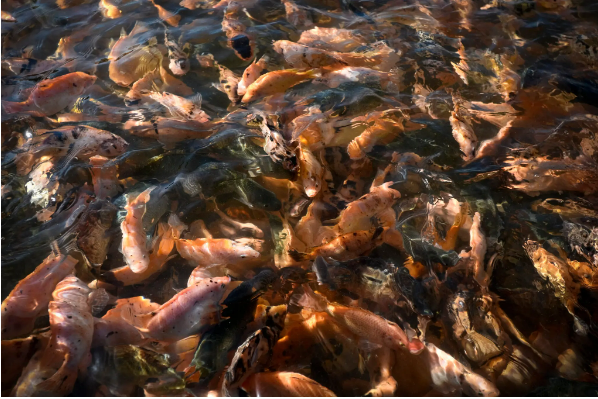我们通过发表论文来表彰学生 STEM 写作比赛的前八名获奖者。这个是麦琦瑶写的。

A slimy, grayish, thin rectangular patch was put on the electrician Josué Bezerra Jr.’s burn wound. But that flap of scaly, stretchable skin wasn’t just any bandage. It could be lying on your dinner table now. Meet the humble tilapia, the new Brazilian savior.
Brazil’s hospitals lack ready supply of the usual human, pig and artificial skin needed to satisfy burn treatment demands. So, doctors often use sulfurside cream and gauze to dress wounds, which requires painful daily dressings. Dr. Edmar Maciel then thought to use tilapia skin, which was readily available, as an alternative bandage. In 2015, he started preclinical trials with tilapia skin at the Federal University of Ceará.
The treatment begins with doctors cleansing the fish skin with multiple solutions, then sending it to São Paulo for radiosterilization, ensuring that it’s virus-free. Tilapia skin can last up to two years after sterilization.
During treatment, doctors disinfect the wound area thoroughly before applying the sterilized tilapia skin. The skin covers the wound area and stays on until recovery, just like a permanent Band-Aid. Tilapia skin “prevents loss of moisture and proteins on the wound and it stays bonded to the bed of the wound until it heals over,” Dr. Maciel said. This process helps the wound to recover faster and protects it from contamination. Moreover, tilapia skin has high type I collagen content. The collagen component promotes the growth of fibroblasts, a type of cell in the connective tissue, helping the wound patch up and generate new layers of skin. Eventually, the tilapia skin will dry out — no need for the daily changing that cream and gauze require.
Surprisingly, the tilapia approach was more effective than the cream and gauze. Dr. Maciel’s 2017 Phase II study compared the traditional method with the tilapia bandage. One hundred fifteen outpatients ranging from 18 to 70 years old participated in the study. Half used the conventional method; half used tilapia. On average, the tilapia group took 1.43 days fewer to regenerate their skin and used 3.72 fewer dressings than the gauze and cream group.
“I didn’t take any antibiotics or pain medication. At 13 days, it was already scarring over,” Mr. Bezerra reported, satisfied at his speedy recovery.
Compared with other types of skin bandages, tilapia provides more benefits. Pig and toad skin have limited usage because of the risk of animal disease infections. Human skin banks rely heavily on donors; however, each check-passed donor can only provide one-third of his or her total skin. On the other hand, tilapia skin comes readily from tilapia fish farms as a waste product and has no risk of infection.
The American Burn Association reports that around 450,000 burn patients need medical attention each year. That rate is higher among low- and-middle-income countries, such as Brazil and many more. Fortunately, at least 500 burn victims have received the tilapia bandage. Doctors hope that it can reach more patients in the years to come.
Works Cited
Associated Press. “Grafted Skin Aids Burn Victims, But There Is a Need for Donors.” The New York Times, 14 June 1981.
“Burns.” World Health Organization, 6 March 2018.
de Sousa, Sérgio. “300+ Burn Victims Treated With Tilapia Skin in Ceará Since 2016.” Agência UFC, 20 May 2021.
Maciel Lima Jr., Edmar, et al. “Nile Tilapia Fish Skin-Based Wound Dressing Improves Pain and Treatment-Related Costs of Superficial Partial-Thickness Burns: A Phase III Randomized Controlled Trial.” Plastic & Reconstructive Surgery, 1 May 2021.
Sussman, Nadia. “Can Tilapia Skin Be Used to Bandage Burns?” YouTube, uploaded by STAT News, 2 March 2017.
“Tilapia Skin Burn Bandage.” World Innovation Summit for Health, 5 Aug. 2021.
Valenzuela-Rojo, David R., et al. “Tilapia (Oreochromis aureus) Collagen for Medical Biomaterials.” Seaweed Biomaterials, 5 Nov. 2018.
Yang, Fei, et al. “Marine Collagen Peptides Promote Cell Proliferation of NIH-3T3 Fibroblasts Via NF-κB Signaling Pathway.” Molecules, 19 Nov. 2019.